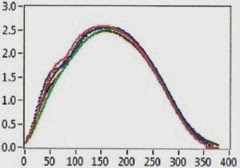 Last Friday I traveled down to Boston to give a research presentation at the Spaulding National Running Center. I was invited by Dr. Irene Davis, one of the world’s leading experts on running gait and injuries, and it was awesome to be able to spend an afternoon at a top notch gait lab. I got to chat with Irene for a bit about her clinic’s approach to treating running injuries (gait retraining is emphasized), met with her clinic/lab group, and gave a talk on my running foot strike research (with a surprise attendee – Harvard’s Dr. Daniel Lieberman).
Last Friday I traveled down to Boston to give a research presentation at the Spaulding National Running Center. I was invited by Dr. Irene Davis, one of the world’s leading experts on running gait and injuries, and it was awesome to be able to spend an afternoon at a top notch gait lab. I got to chat with Irene for a bit about her clinic’s approach to treating running injuries (gait retraining is emphasized), met with her clinic/lab group, and gave a talk on my running foot strike research (with a surprise attendee – Harvard’s Dr. Daniel Lieberman).
As part of the visit, I was able to run on the force treadmill that is a centerpiece of the clinic (they also have a long runway with embedded force plates). I’ve run on force treadmills a few times before, but the nice thing about the Spaulding lab is that it’s set up to provide a simple report for patients that come to the clinic. I thought I’d share my results here.
Just to give a quick overview of what was done, I ran at a relatively easy pace (>10:00/mile) in both shoes (New Balance 1400 v2) and barefoot. While I ran I was able to see my vertical ground reaction force profile on the screen in front of me, which was very cool. It was fun to make the impact peak appear and disappear by forcing a pronounced heel strike. I tried my best to run with my natural gait, which tends to hover around a midfoot strike, though may move backward or forward depending on the shoes on my feet.
Here are the videos and results:
Video – New Balance 1400 v2 Side View
Video – New Balance 1400 v2 Posterior View
Right Foot Results – New Balance 1400 v2
Left Foot Results – New Balance 1400 v2
Video – Barefoot Side View
Video – Barefoot Posterior View
Right Foot Results – Barefoot
Left Foot Results – Barefoot
Some Thoughts
One of the big debates in the running form world lately is whether or not impact peaks or loading rates are a major cause of running injury. The impact peak (see image below) is a rapid initial spike in the vertical ground reaction force (Fz) plot that occurs when the foot initially touches down. It is largely a function of the foot and lower leg making contact and does not reflect the weight of the entire body bearing down yet.
What you’ll notice in my plots (left box in each image) is that the impact peak is small to non-existent in most of them, especially in my left foot barefoot plot. The other three plots typically show a small impact bump. This is typical for a non-heel striking, non-overstriding gait. In the videos you can see that my shin is roughly vertical at contact, and I tend to land midfoot or forefoot most of the time (based on my wear patterns, I’m pretty sure I do heel strike a bit when I run, but not in these videos). In addition to the lack of an impact peak, my vertical loading rates are lower than average. Vertical load rate is essentially the speed at which force is applied to the body at contact. My values range from 38-48 Bw/sec, with the lab average being 75 Bw/sec. Interestingly, the vertical loading rate on my left leg dropped about 8 Bw/s when I took off my shoes, right leg stayed pretty much the same. Not sure why there was a difference.
A couple of other things to note:
1. My cadence computed from my stance and swing times comes out to around 165-170 steps/min. My normal running cadence at a comfortable pace outdoors is around 182-185 steps/min, and since I was running on the treadmill at >10:00/mile pace this seems about right for a pace about 2:00/mile slower than what I typically run (cadence changes with speed).
2. My swing time on the right was consistently shorter than the left, again not sure why or if it matters.
3. My leg stiffness was pretty consistent across the board at 16-17 kN/m, and this is higher than average. Leg stiffness is the ratio of the maximal vertical force to maximal leg compression during stance. So, either my max vertical force is higher than average, or my leg doesn’t compress as much as for other people (I guess I’m not springy). I tend to have a fairly flexed knee at contact, and my guess is that I tend to bend it a bit less after initial contact than average. I’m wondering if my tendency toward higher leg stiffness might explain why I tend to prefer softer shoes?
4. I really have no idea how to interpret medio-lateral or antero-posterior force plots, so if you do I’m happy to hear your thoughts!
So there you have it. I wish the videos captured my waist and trunk movement as I see a lot of people with hip drop issues, and Irene indicated that excessive thigh adduction/hip adduction is one of the biggest risk factors for injury that they deal with and is one of their main targets for gait retraining (along with reducing loading rates). Excessive thigh adduction is typically manifested by the thigh angling inward to a greater degree during stance and minimal space between the knees during swing through.
I’ll end with a brief plug for the Spaulding National Running Center – they are looking for barefoot and minimalist runners (with minimalist meaning most miles in shoes with zero to minimal cushion) to analyze in the lab. If you are in the Boston area and meet these criteria, you might qualify for a run on the force treadmill. They also treat running injuries, so contact them if you are in need!


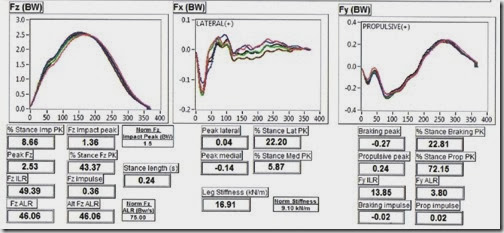
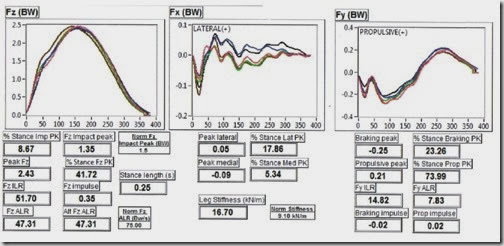
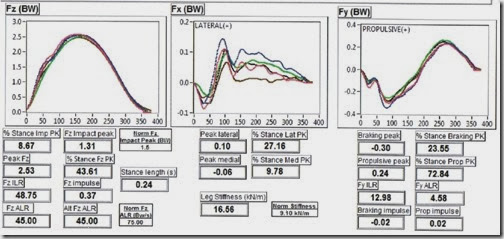

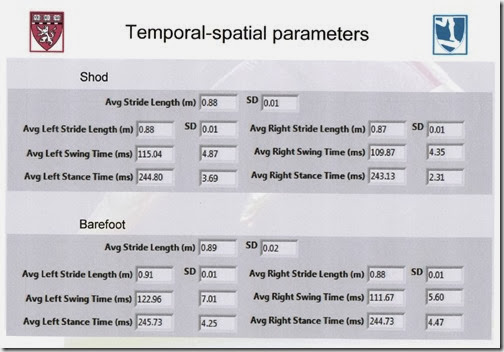
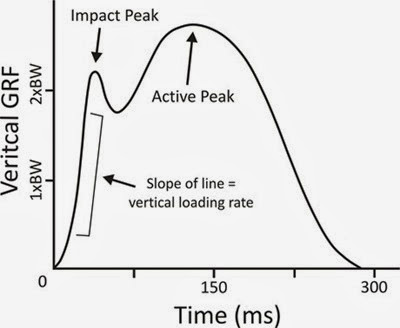
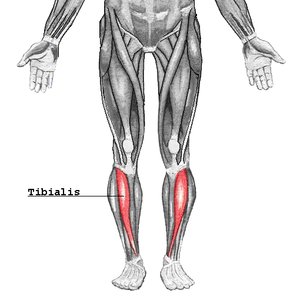
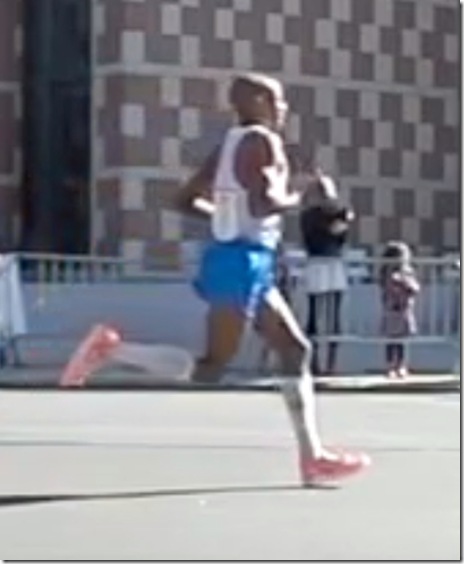
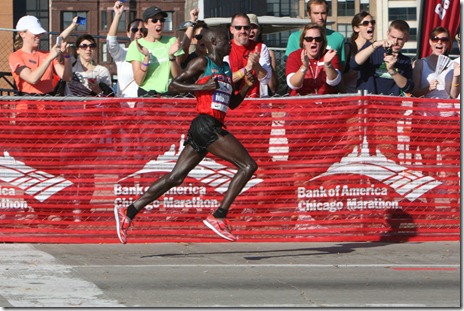
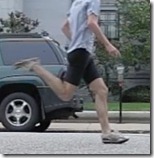















” I tried my best to run with my natural gait, which tends to hover around a midfoot strike, though may move backward or forward depending on the shoes on my feet.”
I am glad you mentioned this. I did a first run this past weekend in a pair of NB Minimus and I could swear I had more of a strike closer to the forefoot because I normally run in Newton Gravity’s and my feet were searching for the tabs…
Very cool and… dense with data. Given the tools now available on smartphones the apps and things like the M7 motion processor on the iPhone5s I can see at least part of this gait data analysis available to the masses or making things to work on after a full analysis. I was amazed that ismoothrun, a new app I tried for the first time yesterday, gave me during a 10:14 m/mi 7 mile run a stride length 0.95 meters and strides per minute at 166. What does it mean? Not sure yet.
Pete, there isn’t actually any contact info on the SNRC web-site…
Should be a phone number here: link to runsnrc.org… Not sure about email contact. I can connect you if you are interested, let me know.
—-
Pete Larson’s Web Links:
-Performance Health Spine and Sport Therapy<http: about-us=”” dr-peter-larson=”” performancehealthnh.com=””>
-My book: Tread Lightly: link to ow.ly
-Blog: https://runblogger.com
-Twitter: link to twitter.com
-Facebook Page: link to facebook.com…
-Discussion Forum: https://runblogger.com/forum</http:>
Yes, please. Sent you an email…
I think shorter swing time on one side means longer impact time on that same side which could lead to problems. At least that’s what my PT has told me. Although now that I look at the table below that doesn’t seem to bear out – interesting stuff!
wow but now that I look at the data that doesn’t quite bear out! I’d have to think on that some more – interesting stuff!
So I’m busy reading and hear Green Day — are you trying to monetize Ben now?
link to youtube.com…
That’s the problem with not having a personal YouTube channel :) Made that for my parents to see, no ads for Ben, though he sings a mean Green Day!
—-
Pete Larson’s Web Links:
-Performance Health Spine and Sport Therapy<http: about-us=”” dr-peter-larson=”” performancehealthnh.com=””>
-My book: Tread Lightly: link to ow.ly
-Blog: https://runblogger.com
-Twitter: link to twitter.com
-Facebook Page: link to facebook.com…
-Discussion Forum: https://runblogger.com/forum</http:>
Great article–objective run data is always cool.
We test a lot of propulsive and medial/lateral force data here at Heeluxe. Propulsive force, simply stated, is the breaking force at early stance followed by propulsion (or accleration) in the second half of stance. This force runs parallel to the ground in front to back motions (sagittal plane).
Breaking force is a huge indicator of injury. We see large increases in breaking force in jumpers with knee pain and also in hikers going down hill (thus, hikers knee!). A study out of USC studied increased breaking forces in dancers and it’s relationship to knee injury. Shoe shape, material, speed, and stride mechanics all effect this variable.
Propulsive force is performance. It’s awesome. Typically, more talented runners have a higher propulsive force and a higher ratio of propulsion to breaking forces (ie: they break less and accelerate more with every stride).
Lateral force is side to side sheer force. It’s not a direct link to pronation/supination but you can infer overall leg stability from this.
Thanks for sharing your results–testing is always so cool! It’s great to see more people taking advantage of this.
Just an FYI to Geoffrey Gray, it’s braking, not breaking force.
When anyone is running at a constant overall speed, i.e. on a treadmill, whether they are fast or slow, the braking force integrated (or averaged) over the time it is exerted is equal to the propulsive force averaged over the time it is exerted. No matter how “awesome” a runner is, they can not violate the laws of physics.
Hi Rodger:
Great points! Our Force Plates measure force. There are other factors (like traction) that effect the overall performance, but here we’re looking just at forces.
We actually dont test on a treadmill, we have this great “run through” lab that replicates real world running. Here’s an example: link to youtube.com…
We certainly dont expect our runners to violate Sir Issac’s rules. However, breaking and propulsion sheer force don’t have to equal out since we are looking at forces in 3d and muscle contraction amount and timing can change our numbers.
Awesome conversation!
I don’t mean to be argumentative. I’m an educator. If you measure a runner with greater AP propulsive ground force than braking force, they are accelerating, i.e. not running at a constant speed. The peaks can be different, but the “area under the curve”, i.e. braking impulse must = the propulsive force.
link to colorado.edu…
Nice Lab!
Since we look at 3D force vectors, wouldn’t the resultant vector have to be equal for no acceleration, no? The relationship of vertical and sheer forces can vary in their balance while still producing the same constant speed.
Geoffrey:
I don’t understand your reply. Running at a steady overall speed is a state of equilibrium. Thus, the average force in vertical direction must be = 0, the average force in the fore-aft direction = 0 and the average force in the side to side direction = 0. In the vertical direction, the average force (over a complete step or stride) measured with a force platform = body weight. In the fore-aft direction the average must be = zero or else the person is either slowing down or speeding up. In the side to side direction, the average force must = 0 in order to run in a straight line. “Them’s the facts.”
Geoffrey,
What he is trying to say is that if you have a runner enter your “run through” lab at a given velocity, and leave the lab at the other end at the same velocity, then all of the propulsive and braking forces (that vary with each step) are a sum total of zero. If your athlete speeds up, then propulsion will be higher than the braking speed, but otherwise it isnt possible. This still means that braking forces can be related to injury, but it also means that athletes who exhibit greater braking forces also tend to propel forward at a greater rate in order to maintain a constant velocity.
I was a “customer” at Spaulding back in Jan ’12 when they first opened the clinic (the evaluation was Dec ’11). The lab wasn’t even ready back then. When you go through the official program/eval you are given a report and the video which does the shod vs. unshod side/back/front views. The video I have does include the waste/trunk movement – I came in with all of the factors you mentioned – hip drop, hip/thigh adduction and heal striking. Mine was pretty extreme and they didn’t expect to get a full correction – but the goal was to reduce the chances of injury by correcting as much as possible. It was a good first step for me and have come a long way, but it has been a “work in progress” ever since. I have some hindsight perspectives based on that participation and experiences thus far, if you have any questions (if you have any interest in experience versus theory/science) feel free to contact me.
Pete, thanks for posting about your visit. It was great to have you and thanks for sharing your work with us!
Your medial-lateral forces are within what we typically see and consider normal (-0.10 BW and 0.10 BW respectively) with the exception of your right foot shod medial peak. Typically, this information is one data point that we use to try to understand an injury. In your case, it’s unlikely to “mean” anything by itself, but it might be a piece of the puzzle if you end up having an issue down the road.
With our patients, as Karen pointed out, we shoot a longer series of videos in the clinic that does include the upper body. What you have are the high speed cameras that are synced to the force plates in the lab.
Karen, I hope you are doing well, you were at the running center before I was!
Tuck, we are working on a website update. You can get a hold of us directly at runsnrc@partners.org, 617-952-6833.
We are also on twitter @runsnrc.org
Thanks,
Rob Morrison PT, DPT
Spaulding National Running Center PT Clinic Coordinator
Rob,
Thanks for the info and it was great meeting you as well! I think I tend to have a lot more motion at the ankle on the right side for some reason, and that side is susceptible to issues with some shoes, but is pretty free of issues most of the time.
Pete
Sent from my iPad
Hi Rob – yes I was aware of Irene’s work and had actually contacted her before she came to Boston, so I was eagerly waiting for the opportunity to have an evaluation completed. If you are interested in some feedback on my experience, I will gladly share, just let me know if there are any specific questions I can answer.
Pete, I’m not really into match making but I just have a hunch you will like what this guy has to say about running form. I don’t know where you live but I could see you being a coach and mentor to others. Check this site out and let me know what you think.
Richard Diaz has personally responded to my emails and included my questions on one of his Podcasts so I know he listens to input and that he is a learner.
link to diazhumanperformance.com
link to naturalrunningnetwork.memberlodge.com
Run Long & Run Happy!
Thanks for the links, hadn’t seen him before. I actually am doing a bit of coaching now, in addition to the gait analysis: link to performancehealthnh.com. Having fun with it!